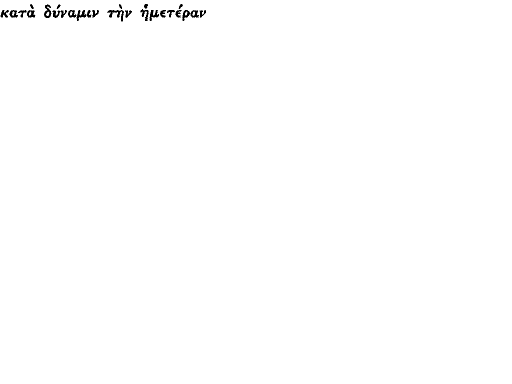Article contents
A Use Of Myth In Ancient Poetry1
Published online by Cambridge University Press: 11 February 2009
Extract
It is perhaps unnecessary to defend the principle that mythical exempla in ancient poetry are not merely decorative, but serve in the expression of ‘significant emotion’ it would still be welcome to see it more frequently and more coherently applied. This paper tries to isolate one characteristic use of myth in four poems from Hellenistic and Roman authors; the last section summarizes its conclusions and briefly sets them in a context of literary history.
- Type
- Research Article
- Information
- Copyright
- Copyright © The Classical Association 1974
References
page 82 note 2 Eliot, T. S., Selected Essays (London, 1951), 22.Google Scholar
page 82 note 3 The main arguments for this view are usefully summarized by Williams, , Tradition and Originality in Roman Poetry), (Oxford, 1968), 229Google Scholar fr.; for more detail see esp. Prescott, , T.A.P.A. lxxi (1940), 473–500.Google Scholar The problems of nomenclature, however, remain difficult. Lachmann's apparently attractive proposal, to read the praenomen ‘Manus’ in lines 1–40 and the nomen ‘Allius’ in the rest, is unacceptable. The praenomen, the distinguishing mark of a Roman citizen, is too formal or too respectful for this context, where it could hardly sound anything but sarcastic: cf. Perrotta, , Atene e Roma N.S. viii (1927) 135Google Scholar f., referring to Paoli, , R.F.I.C. liii (1925), 542–50.Google Scholar For other passages besides those dealt with by Paoli where the praenomen indicates a tone of solemnity, see Philodemus, , Rhet. I. 223. 5 Sudhaus; Lucilius 1035 Marx; Cic. De Or. 2. 286, De Legg. I. 5, De Rep. 6. 15, Ad Fam. 12. 25. 5; Ov. Ex Pont. 4. T. 35, 15. 3, 18; Petron. 30. 3 and Friedländer ad loc. Perhaps we have simply to fall back on Schöll's mi Alli: cf. Prescott, art. cit. 495–7; Perrotta, art. cit., 136 f.Google Scholar
page 82 note 4 Cf. Lieberg, , Plana Divina (Amsterdam, 1962), 204 f., 218 f.Google Scholar
page 83 note 1 Cf. Rankin, , Latomus xxvi (1967), 693 f. for this and other correspondences (some fanciful).Google Scholar
page 83 note 2 Fordyce has a good discussion of whether to take lines 57–62 with what precedes or what follows. He seems to incline, as I do, to the former course; and the correspondence between those lines and 109–16 may be taken as another argument in its favour. Further, 61 f. are not perhaps as irrelevant as may be thought, for they seem to imply that tears are a relief of sorrow, and so give a kind of pleasure to the weeper (cf. Iliad 23. 10, 98; Aesch. fr. 739 Mette, as quoted by Σ on Iliad 23. 1 o; Soph. El. 285 f.; Eur. fr. 563, 573 Nauck); by mentioning this inferior form of relief Catullus leads up to and enhances the praises of Allius' help. So too the conclusion of the corresponding simile (116) produces a fresh point of contact with the narrative—like Laodamia's yearning, Hercules' labours led up to his wedding; and 103 f., the end of the digression on the Trojan war, by mentioning its cause in Paris' adultery link it to the theme of love opposed to marriage which dominates the poem.
page 83 note 3 Baehrens suggested colligit or concipit iram; if a perfect is more appropriate, perhaps flagranti excanduit ira.
page 83 note 4 If line 142 is an exclamation in parenthesis, then no lacuna need be posited and nec in 141 is picked up naturally by nec tamen in 143; cf. Friedrich ad loc., and for the use of nec tamen add Cic. Ad Qu. 3. 1. 20. This seems better than Williams' (op. cit. 712 f.) proposal to put nec divis … aequum est in parenthesis, which, though it also avoids postulating a lacuna, leaves no connection between nec and nec tamen.
page 83 note 5 This interpretation has the advantage of giving to onus an attested meaning and to toile the sense one would expect it to have when onus is its object (cf. Fordyce ad loc.): the idea is similar to that of line 136.
page 84 note 1 Facia is not to be emended: see Pichon, , De sermone amatorio aped latinos elegiae scriptores (Paris, 1902), 54 f.Google Scholar
page 84 note 2 e.g. Cat. 64. 139 ff.; Men. Sam. 52, Georg. 74; Lucian, Dial. Mer. 7. 2. This point is made all the plainer by the poem's reversing the situation of Call. Epig. 25, its model.
page 84 note 3 Contrast the implications of cupiens in 64. 145 and cupido in 70. 3. For another similar, though less powerful, reversal see Prop. I. II. 23 with Iliad 6. 429 f. In general cf. Klingner, , Römische Geisteswelt (Munich, 1961), 226Google Scholar; Schäfer, E., Hermes Einzelschr. xviii (1966), 68–72.Google Scholar
page 84 note 4 Cf. Kinsey, , Latomus xxvi (1967), 49;Google ScholarBardon, , Propositions sur Catulle (Brussels, 1970), 98.Google Scholar
page 84 note 5 Munera … et Musarum … et Veneris (to) both refer to poetry (cf. Jachmann, , Gnomon i [1925], 211Google Scholar); and indeed, as Prescott observes (art. cit. 500), the request would be granted by the single act of sending a love-poem. For the love-poet, as such, is able to smooth out lovers' quarrels or soothe their pains (cf. Prop. 10. 15–19 and Theoc. II. I ff., 13. 1 ff., where the poems speak of the troubles of love and at the same time are consolation to a lover). But he is also, as always in ancient poetry, assumed to be himself a lover (cf. Fraenkel, , Gnomon xxxiv [1962], 262). So the ambiguity of lusi (17), studium (19), studio and delicias (26) should not be resolved, because to give up love-poetry is also to give up love (cf. Anacreon ap. Himer., Or. 48. 4 and Propertius, who uses two farewells to love, 3. 24 and 25, as the seal of his first three books, the ones almost entirely devoted to love-poetry). The distinction between munera Musarum and munera Veneris is thus, though sharp, only a formal one; its purpose is to characterize Catullus as a poet who can unite the divergent qualities of learning and passion. For similar self-characterizations see ‘Catullus 116’, C.Q. N.S. xxiii (1973), 306, 309.Google Scholar
page 84 note 6 This point is made very clearly by Vahlen, , Gesammelte philologische Schrifien, ii (Leipzig and Berlin, 1923), 660 f. = Sitzb. d. preuss. Akad. d. Wiss. (1902), 1031 f.; compare also the use of similar phrases (‘I cannot but speak’) in Aesch. P.V. 106 f.; Eur. Hipp. 990 f.; Antiphon Tetral. 2. βI; Auson. Ep. 29. 48, after the writer has expressed a preference for silence.Google Scholar
page 85 note 1 Cf.  in Greg. Thaum. Ad Orig. 203, which also refers back to an initial recusatio (ibid. 1–18). For some useful comparisons with the form of recusatio which opens the Ciris see Salvatore, , G.I.F. ii (1943), 36 f.Google Scholar
in Greg. Thaum. Ad Orig. 203, which also refers back to an initial recusatio (ibid. 1–18). For some useful comparisons with the form of recusatio which opens the Ciris see Salvatore, , G.I.F. ii (1943), 36 f.Google Scholar
page 85 note 2 Cf. Fraenkel, art. cit. 262.
page 85 note 3 Cf. Williams, op. cit. 230.
page 85 note 4 They correspond to the form of encomium which Menander (Rhet. Gr. iii. 414. 31 ff. Spengel) calls  and which deals with specific deeds of the person concerned. Further encomiastic features are the repeated is in 67 f. (cf. Norden, , Agnostos Theos [Leipzig and Berlin, 1923], 163–6) and the promise of long-lasting fame in 43 ff. (cf. Gow on Theoc. 16. 30 f.). The end of the poem (155 ff.), besides being an epistolary vale, is a hymnic conclusion (cf. Kroll on 64. 22).Google Scholar
and which deals with specific deeds of the person concerned. Further encomiastic features are the repeated is in 67 f. (cf. Norden, , Agnostos Theos [Leipzig and Berlin, 1923], 163–6) and the promise of long-lasting fame in 43 ff. (cf. Gow on Theoc. 16. 30 f.). The end of the poem (155 ff.), besides being an epistolary vale, is a hymnic conclusion (cf. Kroll on 64. 22).Google Scholar
page 85 note 5 The poem is thus, in one of its aspects, a sort of ‘farewell to love’, a genre where a wavering attitude is natural and common (cf. Cairns, , Generic Composition in Greek and Roman Poetry [Edinburgh, 1972], 79–82).Google Scholar
page 85 note 6 Cf. Fraenkel, art. cit. 263; Schäfer, op. cit. 82 f.
page 85 note 7 Cf. Kinsey, art. cit. 49. Coniunx and its cognates, no less in love-poetry than elsewhere, normally refer to a married person: cf. Pichon, op. cit. 109 f.
page 86 note 1 Besides Kroll ad loc., cf. Reallexikon für Antike and Christentum iii 1021, s.v. Digamus.
page 86 note 2 Cf. Cat. III. I and Kroll ad loc.; Hor. Epod. 14. 15 f., where Horace's relationship to the courtesan is contrasted with Maecenas' to his wife.
page 86 note 3 Cf. Reitzenstein, , Sitzb. d. Heidelb. Akad. d. Wiss. iii (1912), Abh. 12.Google Scholar
page 86 note 4 Cf. Reitzenstein, art. cit. 14: ‘Das foedus amatorium ist das Gegenbild der Ehe’. See further Williams, op. cit. 404–7, 412–17, and esp. Prop. 2. 6. 42 where uxor is used of Cynthia.
page 86 note 5 Cf. Lieberg, op. cit. 249 f.
page 86 note 6 Cf. Cat. 61. 31 and Lieberg, op. cit. 182, 221.
page 86 note 7 Cf. Kinsey, art. cit. 42 f.; Wilkinson, , C.R. n.s. xx (1970), 290. As they point out (cf. Prescott, art. cit. 488–90) dominant is certainly the right reading in line 68. Therefore nobis there must mean ‘Lesbia and me’ and communes in 6g ‘shared by Lesbia and me’; the use of the word is adequately paralleled by Kroll ad loc. and Ov. Am. 2. 5. 31. The delay in explaining who the other person implied in nobis and communes is heightens the excitement of her appearance in line 70.Google Scholar
page 86 note 8 A fresh proposal about the identity of the domina may be in order, since previous ones are far from plausible. It seems unlikely in a poem which, like Catullus' poems in general, tells us all we need to know about the people that play a part in it, and whose last lines seem to sum up the dramatis personae, that the word should allude to a figure whose role is obscure (cf. Kinsey, art. cit. 45). She may then be simply the goddess Venus who is likewise conceived as becoming the mistress of a house devoted to erotic activities in Hor. Od. 1. 30 (cf. Cairns, , A.J.P. xcii [1971], 445Google Scholar ff.) and who is emphatically mentioned in lines 17 f. and 51. A solution of the crux in 157 could be attempted along the same lines by reading et qui principio nobis terram edere fertur. This phrase would then allude to the god Eros who is sometimes thought of as sole creator of the earth (Pherekydes, D.-K. 7, B 3; Lucian, , Amores 32; P.G.M. iv. 1750, 1759) and who has already made an appearance in line 133. For the present tense of edere cf. Verg. Ed. 8. 45, G. I. 279 and KühnerStegmann ii (I) § 31. 6. Vahlen suggested, less appropriately I think, that 157 f. referred to another god, Jupiter (art. cit. 1043)Google Scholar
page 87 note 1 Verecundae (136), as Kroll observes, is explained by rara … furta: Lesbia is ‘discreet’ or almost ‘well-behaved’ because her infidelities are few (contrast omnivoli and plurima facia of Jupiter in 140). The word is an attempt to play down those infidelities and to contain the feelings they might arouse. The objections of Buchner and others to it (see Lieberg, op. cit. 253 ff.) are therefore misconceived.
page 87 note 2 Cf. Bardon, op. cit. 98 f.
page 87 note 3 This detail is, on the evidence as we have it, Catullus' invention. The nearest parallel is in Eustathius (1. 507. 1–6 van der Valk), who retails two versions of the story where the anger of Aphrodite plays a part. But this anger is only the cause of what happens after Protesilaus' death.
page 87 note 4 Cf. Lieberg, op. cit. 208 f.
page 87 note 5 So Pepe, , G.I.F. vi (1953), 107–13 and with more restraint Lieberg, op. cit. 239–42. The objections of Pennisi (Emerita xxvii [1959], 255–20) do not, however, do justice to the complex attitudes expressed by Catullus' poem.Google Scholar
page 87 note 6 So Kinsey, art. cit. 51 n. 3.
page 87 note 7 e.g. Soph. El. 505 ff.; Eur. Med. 1 ff., Hipp. 752 ff., Hel. 1353 ff.
page 87 note 8 On religious language in Cat. 76 see the helpful remarks of Williams, op. cit. 411 f.
page 88 note 1 In both poems a dead woman addresses a living man, lover or husband; and in both she defends her conduct in a quasi-forensic way. Within this embracing analogy some significant contrasts are unfolded. The speaker of 4. 7 is a now betrayed mistress: that of 4. r is an honoured wife and mother. The lover in 4. 7 has neglected the rites due to the dying and dead woman (23 ff.): the husband in 4. II will not leave off weeping at his wife's tomb (1 ff.) and is even devoted to her image (81 ff.). Cynthia looks forward to the time when she will rub her bones against her lover's (93 f.): Cornelia renounces any claim on Paullus and envisages his remarrying (81 ff.). The ghost in 4. 7 has returned—a sign that something is amiss: in 4. 11 she is preparing for an honourable and irrevocable stay in the other world (contrast esp. 4. 7. I ff and 4. II. I ff.). Cynthia's accusations do not entirely correspond to Propertius' narrative (5 f.), but this only enhances the sense of her jealousy and the troubled relationship.
page 88 note 2 e.g. Fraenkel, , Horace (Oxford, 1957), 193;Google ScholarCommager, , The Odes of Horace (New Haven and London, 1962), 172Google Scholar; Williams, , The Third Book of Horace's Odes (Oxford, 1969), 138.Google Scholar Heinze (p. 374) seems to be an exception, but his remarks are too brief. I have not been able to see Buscaroli, Perfidum ridens Venus (Bologna, 1937), a work I know only from Büchner's review in Gnomon xiv (1938), 636–9.Google Scholar
page 88 note 3 With palluit audax (28) Lambinus aptly compares Ar. E.N. 1115b 32 f.: Europa is  . She acts boldly, but soon loses her nerve.
. She acts boldly, but soon loses her nerve.
page 88 note 4 Cf. Menander, Rhet. Gr. 3. 395 ff. Spengel; Prop. I. 8. 1–26; Ov. Am. 2. II.
page 89 note 1 Statius (Silo. 3. 2) also begins with prayers; the  follows at line 51, but is succeeded by further prayers in 101 ff. Theoc. 7. 52–89 (on which see below pp. 91 f.) is roughly analogous in structure to Hor. Od. 3. 27.
follows at line 51, but is succeeded by further prayers in 101 ff. Theoc. 7. 52–89 (on which see below pp. 91 f.) is roughly analogous in structure to Hor. Od. 3. 27.
page 89 note 2 The opening impiis might suggest a prayer to divert bad fortune was on the way; cf. esp. Verg. G. 3. 513: di meliora piis, erroremque hostibus ilium!
page 89 note 3 Cf. Prop. 1. 8. 5 f.; Ov. Am. 2. 11. 27 f.
page 89 note 4 For this analysis, cf. Cairns, op. cit. 190 ff.
page 89 note 5 Cf. Tib. 1. 3. 9 f. Lovers are frequently described as superstitious (e.g. Tib. 1. 5. 9 ff.; Prop. 1. 3. 27 ff.). Cui timebo (7) further emphasizes Horace's involvement.
page 89 note 6 Cf. Cairns, op. cit. 190 f.
page 89 note 7 See Pichon, op. cit. 233. Cf. particularly Cat. 76. 2, 26, where the lover's pietas, as here, takes on religious overtones.
page 89 note 8 Cf. Friedrich, art. cit. 93.
page 89 note 9 Contrast Theoc. 7. 53 f., where the lover promises the weather will be good even when Orion is near setting (i.e. the time of autumn gales), so long as the beloved accepts his suit. That is both more optimistic and more demanding.
page 89 note 10 Cf. Cairns, op. cit., ch. 1 n. 29 and add Horn. Od. 8. 461; Ar. Pax 719. Vivas should also depend on licet, since ‘farewell’ and ‘remember me’ axe a fixed pair.
page 90 note 11 So Friedrich, art. cit. 93; cf. pp. 83 f., p. 86 n. 4 above.
page 90 note 1 Cf. Friedrich, art. cit. 89–95. Europa's whole speech is an admission of responsibility and furore (36) points, as Kiessling-Heinze observe, to ‘Liebeswahn’. Note also that impudens (49 f.) would be a possible word for one who breaks faith with a lover (cf. Pichon, op. cit. 243 on pudor etc. applied ‘ad fidem uxoriam, id est inter amantes perpetuo servatam’).
page 90 note 2 Venus is perfidum ridens because she has beguiled Europa into a passion for the bull: Cupid is remisso arcu because now the deception, and with it the infatuation, is over.
page 90 note 3 Esse nescis (73) should be translated, ‘you do not know how to be’, its proper meaning in Latin; and it is hard to see how a Roman reader could recognize that any other sense was intended, especially since Greek words of knowing take a participle, not a infinitive. It is then picked up and reinforced by disce (74). Cf. Büchner, art. cit. 638.
page 90 note 4 Cf. Od. 4. 2. 3 f.: vitreo datums nomina ponto. There too it is implied that the reward is less than the risk and its consequences.
page 90 note 5 Cf. Maas, Sitz.-Ber. Philol. Verein Berlin 1919, 6 f. = Kleine Schriften (Munich, 1973) 66 f.
page 91 note 1 On the  of the poem see the fine remarks of Friedrich, art. cit. g6 f., 99 f.
of the poem see the fine remarks of Friedrich, art. cit. g6 f., 99 f.
page 91 note 2 On these modifications of the propemptikon and what they express cf. Cairns op. cit. 27 f., 163 f.
page 91 note 3 See also Gow on line 64.
page 91 note 4 As also in Prop. 3. 17; Tib. 1. 2. 1–4; Tib. 3. 6. Ott, Die Kunst des Gegensatzes is Theokrits Hirtengediehten (Hildesheim, 1969). 150, aptly remarks: ‘Beides, die Freude des Erinnerung and die Trauer über die Trennung, werden beim Fest des Hirten gegenwärtig sein’.
page 91 note 5 Cf. Gow's commentary, 2.
page 91 note 6 Cf. Lawall, , Theocritus' Coan Pastorals (Washington, 1967), 93.Google Scholar
page 91 note 7 Cf. further Ov. Ibis 16 and La Penna ad loc.; Mozart-Da Ponte, Cosi fan tutte, Act I scene iii: ‘Ah, Ferrando perdendo mi par the viva a seppellirmi andrei’.
page 91 note 8 This reading (V) is plainly superior to solutis (AB).
page 92 note 1 Cf. R.E. iii 447 f. s.v. Biene.
page 92 note 2 That the flight and the wings are those of poesy is clear from Aristophanes' parody (Av. 1372). Anacreon is reversing the commonplace that the poet is inspired by the beloved's favour (e.g. Anacr. ap. Himer. Or. 48. 4): cf. Prop. 2. 24. 5–8.
page 92 note 3 Cf. Pohlenz, , Kleine Schriften ii (Hildesheim, 1965), 27 f. = Charites, Friedrich Leo … dargebracht (Berlin, 191 1), 102 f. For the use of the word  (or in Latin otium) cf. e.g. A.P. 5. 133 (Maccius); Ov. Am. 1. 9. 41. For the country as an escape from love cf. Hor. Od. 17. 21–8; Epod. 2. 37 f.; Ov. Rem. Am. 169 ff.; and for poetry in the same function cf. Theoc. 11. 1–3 adduced by Ott, op. cit. 151 n. 426.Google Scholar
(or in Latin otium) cf. e.g. A.P. 5. 133 (Maccius); Ov. Am. 1. 9. 41. For the country as an escape from love cf. Hor. Od. 17. 21–8; Epod. 2. 37 f.; Ov. Rem. Am. 169 ff.; and for poetry in the same function cf. Theoc. 11. 1–3 adduced by Ott, op. cit. 151 n. 426.Google Scholar
page 92 note 4 Cf. Ott, op. cit. 151: Comatas becomes ‘in der gegenwärtigen Situation der Liebesnot … zum Rettungsanker’.
page 93 note 1 For the threat of getting another and better woman cf. Cairns, op. cit. 81.
page 93 note 2 On lovers' pietas see above, p. 8g n. 7.
page 93 note 3 Wesen and Herkunft der Fabel (Basle, 1954). The distinction between myth and fable is not relevant here, since it is simply their character as stories and examples which is in question.
- 9
- Cited by




